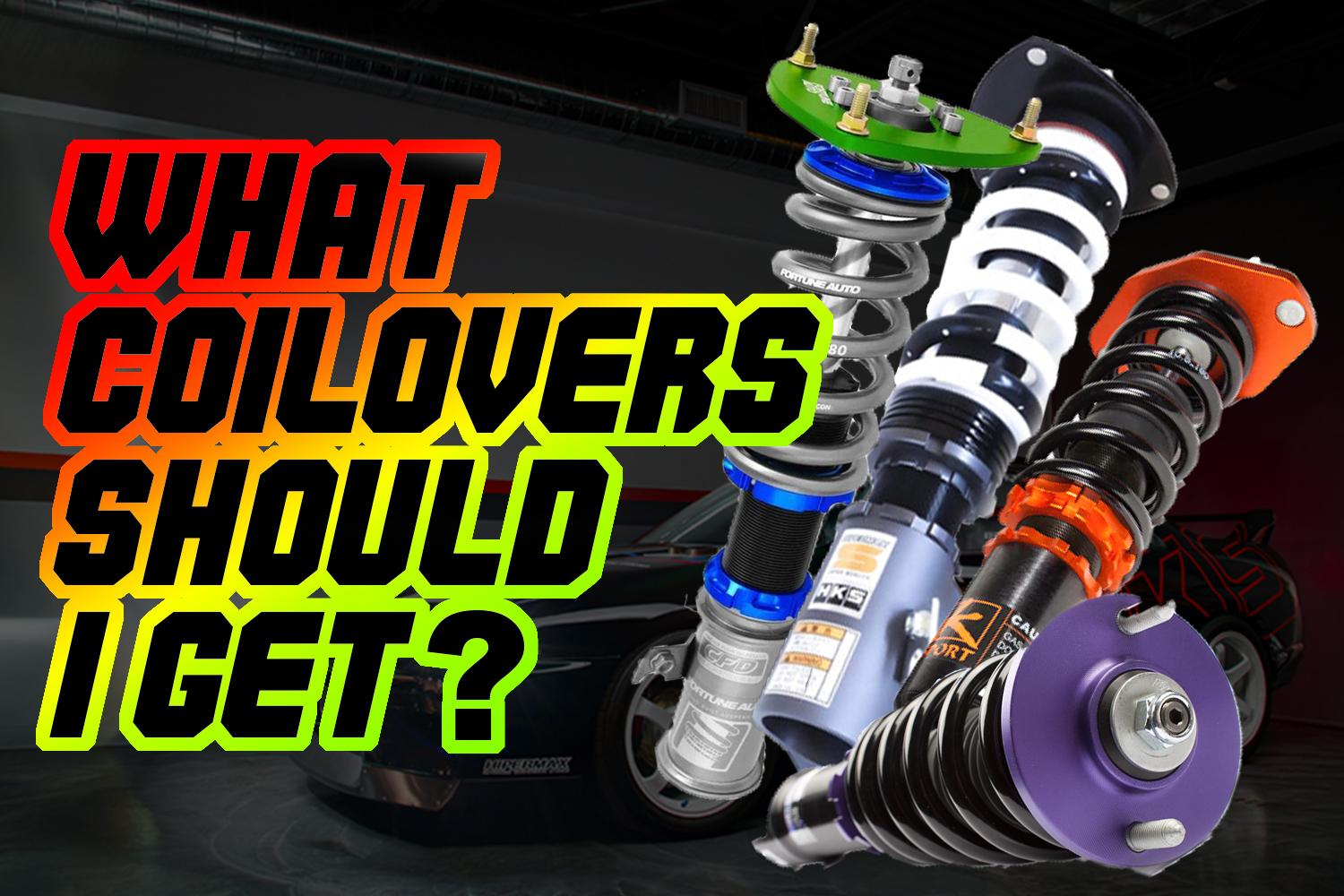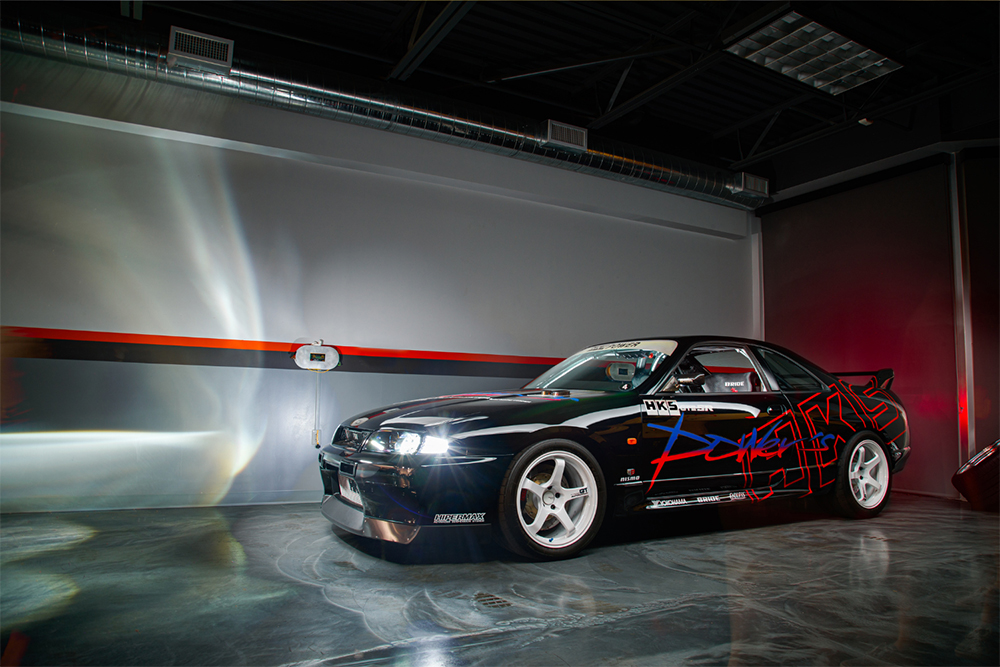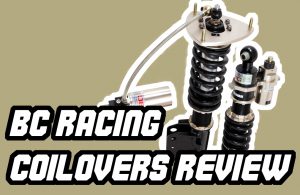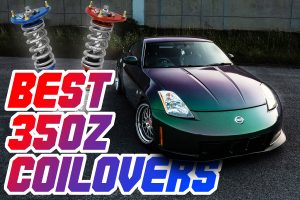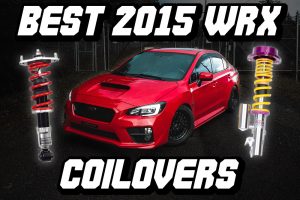What Coilovers Should I Get? Ultimate Guide to Buying Coilovers
There are a number of factors to consider when buying new coilovers for your car in order to make the best purchase decision and get the results you are looking for.
Buying coilovers designed for street use and putting them on your race car probably won’t end well, same as buying track suspension for your daily driver.
In this post I will cover the key points to consider when looking to buy a coilover kit for your car.
-
Budget
Budget is probably the most important factor, no matter what other requirements you have. If you don’t have the budget you aren’t going to be able to buy any coilover kit you want.
That being the case, it’s important to consider what exactly you are looking for from a coilover kit, and then see what you can get within that budget range.
Do you just want to lower the car and don’t care about anything else? Then a cheaper set of coilovers will probably get the job done.
Are you concerned about ride quality and want to make sure the car is still comfortable? Then you probably want a higher quality kit designed for road comfort with adjustable dampening, which is going to cost a little more.
Are the coilovers for a racecar that you need to handle and perform at its best? You’re probably going to need an expensive setup with lots of adjustability.
You also need to consider what features you need and how they will fit into the budget. 1-way, 2-way, 3-way or even 4-way dampening adjustment, camber adjustment, castor adjustment, how low you want to go. These are all factors that can add to the cost of the suspension.
-
What Are You Going to Use The Coilovers For?
What you intend to do with the car is going to be a massive deciding factor in which coilovers you should get. There is a big difference between the coilovers you need for daily driving and ones for a track specific car.
Daily Driving
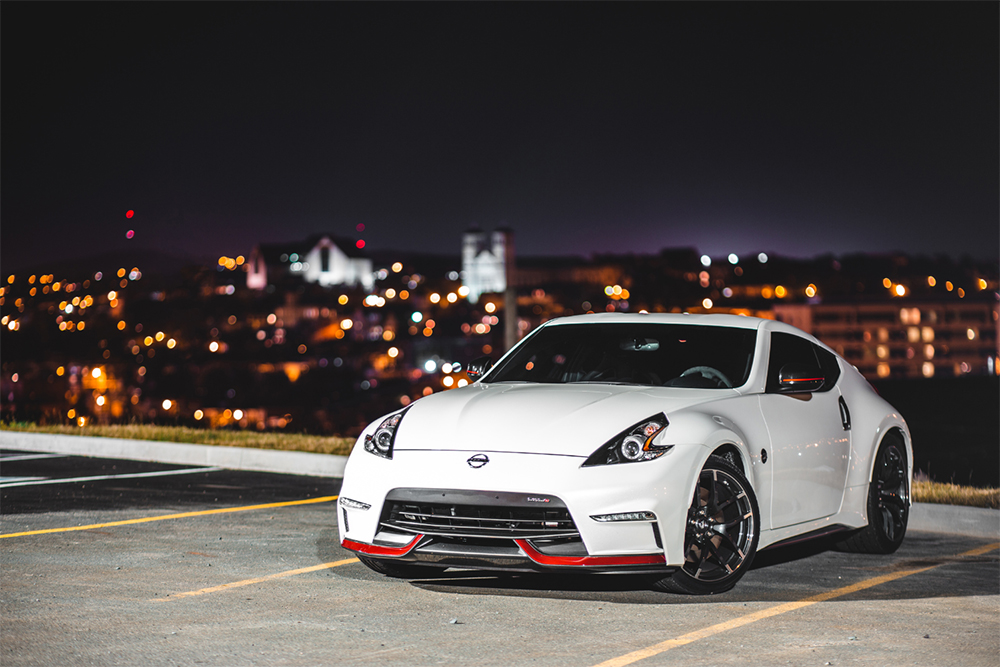
If you are just going to be daily driving and you don’t intend to go to the track, then you can pretty much get any coilovers you want. The question now is how concerned are you with ride comfort?If ride comfort is a big thing for you, then you’ll want to look for a coilover kit that is designed more for street use. Adjustable dampening also wouldn’t hurt so that you can fine tune the ride to your liking. Examples of coilovers that would fit this requirement would be Riaction GT1, BC Racing BR Series, KW V2, HKS Hipermax S and Fortune Auto 500.
If you don’t care about ride quality and just want to lower the car, you could go with cheaper kits such as Megan Racing, Godspeed or even Raceland on the extreme end. Some of these won’t necessarily be a bad ride, but they won’t be as comfortable as some of the previously mentioned options.
Street Use With Track Days
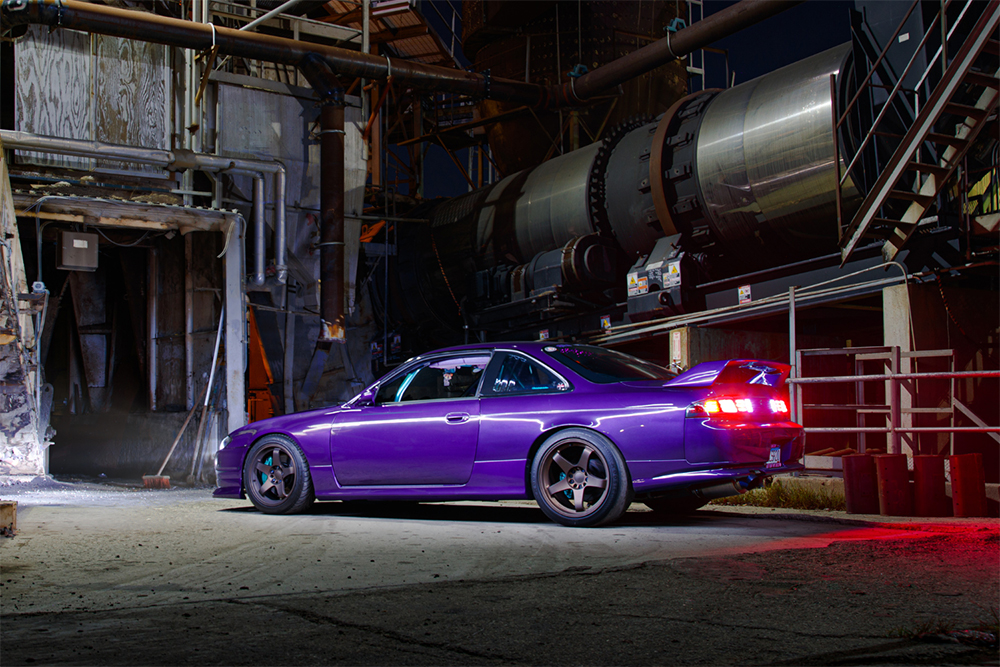
If the car is primarily a street car but you also want to use it for the occasional track day, then most mid-tier options will get the job done. This including the BC Racing BR series, Fortune Auto 500 Series, A’PEXi N1 ExVs and HKS Hipermax.While cheaper coilovers have been used on the track and been fine, they are more likely to fail under stress as well as result in poor handling characteristics due to poorer quality, which means dampers and springs not matched properly etc.
So if your car will be seeing the track, it’s worth putting up the extra few hundred dollars and getting a kit that has proven to be able to handle track use.
Track Car / Racing
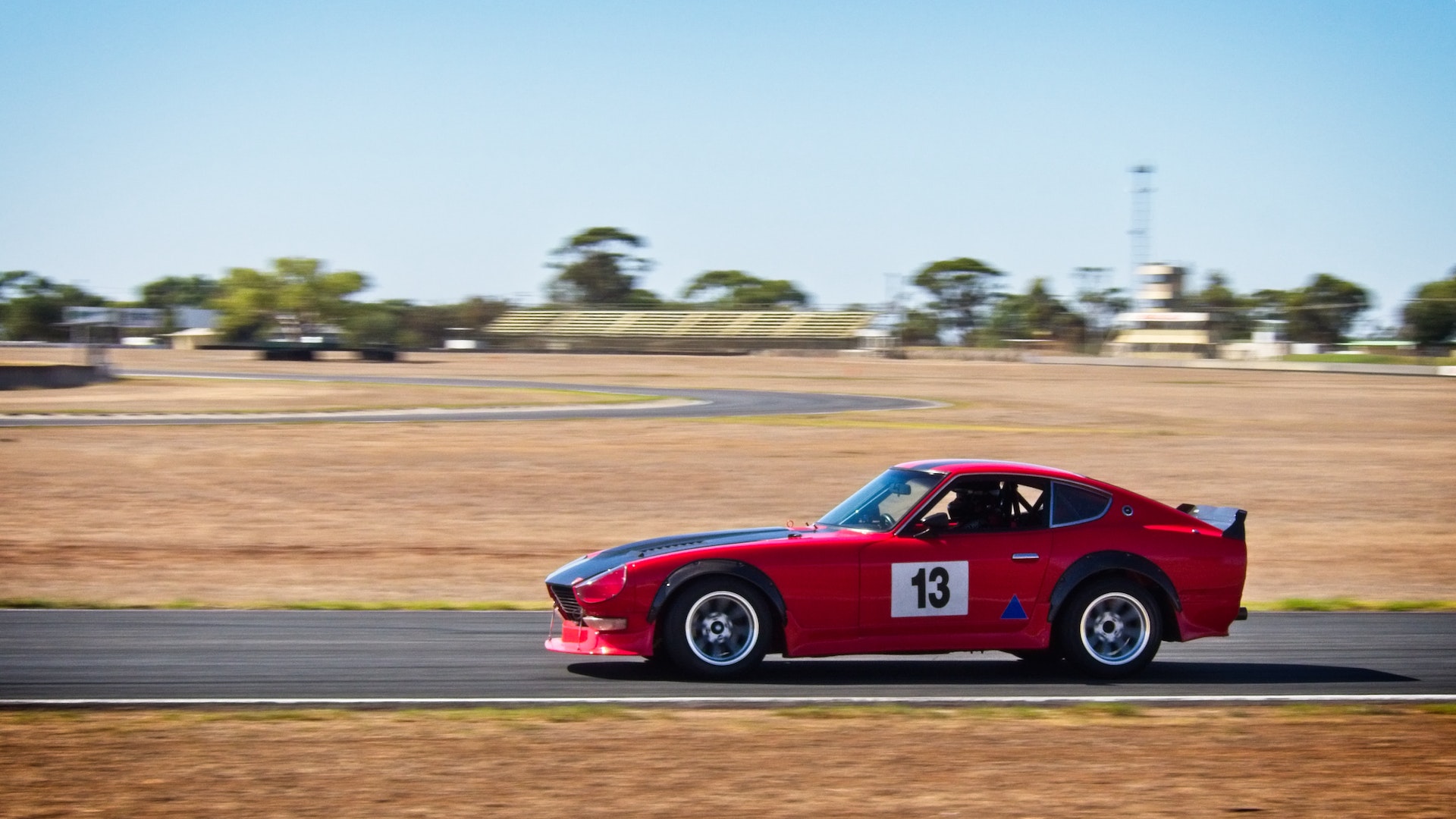
If the car is a dedicated track car, then your best option is to go with track specific coilovers. Which ones you get is basically going to depend on your budget, as they vary anywhere from just over $1000 up to $3000+ for a full on, all features included race-spec kit.If you are just starting out or on a budget, you could go with something like the BC Racing BR Series which, despite being primarily a street coilover, get used by many people on the track and have been proven to hold up well. Other options would also include the Fortune Auto 510s or Pro 2-ways, higher level BC Racing kits such as the DS or RM, HKS Max IV SP’s or KW V3’s.
If money is no object and you want to go all out, then you could go for something like the Fortune Auto Pro 3-way, BC Racing ZR or TEIN Type N1.
Low / Stance

If your primary goal is to get the car as low as possible, then you need to look at coilovers that can go as low as you need them to.Many coilovers have a specific range they should be used in (which won’t be low enough if this is your objective – trust me), and if you go beyond this range you are likely to blow a shock, or at least certainly shorten their life.
So you want to look for coilovers that allow you to adjust the height by the shock body, rather than the spring perches, as that will give you full suspension travel at all ride heights and you won’t have this problem.
Some coilover companies offer super low or extreme low options, which give you lowering of up to 5 inches (125mm) lower than stock. The two that come to mind are BC Racing Extreme Low and Fortune Auto “Super Low”. These two are probably your best options if you just want to slam the car, and they are both good quality coilovers that will give you a decent ride even at low heights.
-
Which Features Do Your Coilovers Need to Have?
More features generally mean more expensive, so you need to decide which features do you need.
Ride Height Adjustment
One of the main features of all coilovers is the ride height adjustment. However, there are two ways this can be done – either by the shock body or the spring perch.
Adjustment by the shock body allows you to wind the whole shock up and down, keeping everything the same except the length of the shock body. What this means is that the damper and springs retain their full range of travel at all ride heights, resulting in a better ride and longer life of the dampers. Most coilovers now use this system including BC Racing, TEIN, HKS, Megan Racing, Fortune Auto, A’PEXi, D2 Racing, Godspeed and more.
Adjustment by the spring perches means you lower where the spring sits on the shock to lower the car. However, by doing it this way, the damper remains in place, so by going lower you lose some of the travel. The lower you go, the less travel you have left, and eventually you get to the point where you don’t have much travel left at all.
The problem with this is that not only will you be hitting the bump stops and the ride will be considerably less comfortable, but the life of the dampers will be significantly decreased. You mostly find this system on European coilovers such as KW, ST, FK, JOM etc. Personally, I don’t know why they use this system, as I don’t see any benefits to doing it this way, but they do.
Spring Rates

Selecting the right spring rates can be very complicated. The general rule to keep in mind is the higher the spring rate, the stiffer the ride. Each car will also have different optimal spring rates for different uses due to factors such as weight, balance and so on.Spring rates should always be matched to the damper, which means that if you get springs with different spring rates, the dampers need to be revalved to match.
Some coilover companies such as BC Racing, Fortune Auto and TEIN will custom valve their dampers to match the spring rates you want.
For the average person, the best thing to do is to just go with the spring rates that come with the coilovers. However, if you want to be sure, I would recommend talking to the retailer you are buying the coilovers from, tell them what you want, and let them recommend the right spring rates.
Dampening Adjustment
The topic of dampening adjustment can get very complex very quickly, but for most people you don’t need to get that deep into it unless you are setting up a track car and chasing lap times.
The basic idea behind dampening adjustment is you can adjust settings in the damper to either make the ride softer or stiffer, to fine tune it to your preferences. The higher up on the coilover ladder you go, the more adjustments you can make, but that’s generally just a recipe for disaster unless you really know what you are doing.
To keep this simple, if you want the ability to adjust the ride from soft to stiff, look for coilovers that offer dampening adjustment. Usually it will be 16-way, 24-way, 36-way etc.
Realistically, you are not going to use most of these settings, and the average person will not be able to tell the difference between single clicks on most coilovers. Add to that the fact that most cheaper coilovers barely make any difference, if at all, between single clicks. It’s mostly just a marketing gimmick in 90% of cases. So don’t pay too much attention into how many “clicks” you get, just the ability to adjust the damping is all you need to look for.
Camber & Castor Adjustment
For a road car this usually isn’t necessary unless you intend to go super low, but if you are doing regular track days or performance driving then camber and caster adjustment can be very handy. Having these adjustments allows you to perfectly set up your alignment, which can affect straight line stability and cornering grip.
Depending on the vehicle (usually cars with McPherson struts), many coilover kits come with camber adjustable strut mounts, and some more expensive kits even have caster adjustment as well.
If your coilover kit has camber adjustable strut mounts, it might be possible to install them rotated so that as you increase negative camber you increase caster as well. That’s one trick to getting caster adjustment even if the strut mounts don’t specifically allow for it.
Just bear in mind the camber adjustable strut mounts are usually aluminium and use pillow-ball mounts, which give you more feel but will result in a harsher ride. So if your priority is comfort, go with rubber strut mounts.
Twin Tube Vs Monotube Dampers
Dampers come in two main configurations, twin tube and monotube.
There are technical differences which I won’t go into detail here, but the general jist is that twin tubes tend to provide a better ride and are generally used in OEM suspension, whereas monotubes provide a stiffer ride, they are more precise (giving the driver more control), and they can be installed in any orientation (allowing for inverted damper setups). They are also less resistant to fade.
Most coilovers use a monotube design for these reasons, but some like TEIN use a twin-tube damper to increase ride comfort.
However, the average person isn’t going to tell the difference, so unless you will be hammering the car on the track, don’t worry about it too much.
-
Weather Conditions
Another important but often overlooked factor to consider when buying coilovers is what weather conditions are they going to see?
This may not be a problem for you if you live somewhere that has nicer weather and doesn’t see snow, but if you intend to drive on the coilovers during snowy winters then you have to take that into consideration.
If you buy any random set of coilovers and drive through snow, you’re going to quickly find out when the snow melts and the sun comes out that they are no longer height adjustable because the collars have seized and the threads have corroded.
So if your car is going to see snow or other harsh weather conditons, make sure you get a coilover than can handle it. Good examples of this are KW, which are the kings of anti-corrosion, and TEIN which is another good option with good anti-corrosion resistance.
Conclusion & My Coilover Recommendations
In the end, your budget and requirements are going to dictate which coilovers you get. The choice is going to be different for a daily driver, a weekend toy, a track car and a show car. To summarise, here are the coilovers I would recommend looking into for each.
Daily Driver (That Might See a Track Day)
Budget option: BC Racing BR Series
Expensive Option: Fortune Auto 500 Series
Street Car With Track Days
Budget Option: BC Racing BR, TEIN Flex Z or A’PEXi N1 ExV
Expensive Option: Fortune Auto 500 or 510 Series
Track Car
Budget Option: BC Racing DS or A’PEXi N1 ExV
Expensive Option: Fortune Auto Pro 2-Way or Pro 3-Way or BC Racing HM/ZR
Show Car / Stance
Budget Option: BC Racing Extreme Low, ST X
Expensive Option: Fortune Auto 500 Series Super Low, HKS S-Style X
- BC Racing Coilovers Review – Are They Any Good? - September 12, 2024
- 8+ Best Nissan 350Z Coilover Guide In 2024 - September 12, 2024
- Top 6 Best 2015 Subaru WRX Coilovers - September 12, 2024

